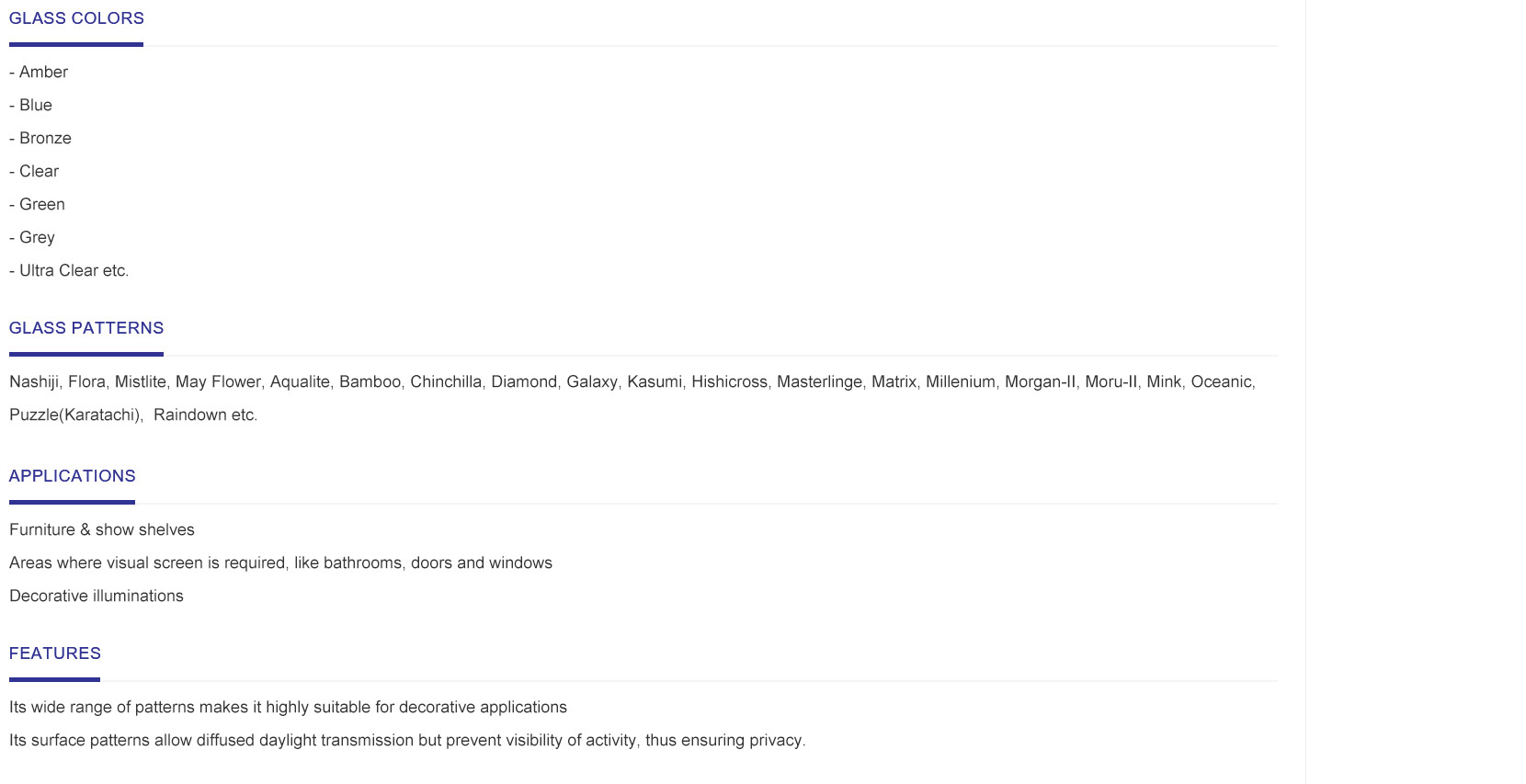

The Benefits of Low-E Tinted Glass Enhancing Comfort and Energy Efficiency
Low-emissivity (Low-E) tinted glass has become a popular choice for both residential and commercial buildings, and for good reason. This innovative glazing solution combines energy efficiency with aesthetic appeal, offering numerous benefits to homeowners, architects, and builders. In this article, we will explore what Low-E tinted glass is, how it works, and the advantages it provides.
Understanding Low-E Tinted Glass
Low-E tinted glass is a type of glass that has been coated with a thin layer of metallic or composite materials to reduce the amount of infrared and ultraviolet light that can pass through. The tinted aspect comes from the addition of color pigments or treatments that reduce glare and enhance privacy while also helping to minimize heat gain from sunlight. The combination of these features makes Low-E tinted glass an excellent choice for buildings that need to balance natural light, comfort, and energy efficiency.
The Mechanism Behind Low-E Technology
The science behind Low-E glass is relatively simple yet effective. The microscopic coating reflects heat back into the interior of a building during the winter and keeps it outside during the summer. This significantly reduces the load on heating and cooling systems, leading to lower energy consumption and reduced utility bills. The tinted aspect of the glass further reduces glare, providing a more comfortable indoor environment, essential for spaces with large windows or direct sunlight.
Advantages of Low-E Tinted Glass
1. Energy Efficiency One of the primary benefits of Low-E tinted glass is its energy efficiency. By minimizing the heat transfer through windows, buildings can maintain a stable indoor temperature without over-reliance on HVAC systems. As a result, homeowners can experience significant savings on their energy bills.

2. UV Protection Low-E tinted glass also offers protection against harmful ultraviolet rays, which are known to fade furniture, flooring, and artwork. By blocking a substantial portion of UV radiation, this glass helps to preserve the integrity and appearance of indoor spaces, making it an ideal choice for homes and businesses that value their interior design.
3. Enhanced Comfort The combination of low solar heat gain and reduced glare contributes to a more comfortable living or working environment. People are less likely to experience hot spots near windows, and glare from the sun is minimized, facilitating a more pleasant experience in areas like offices, lounges, and bedrooms.
4. Aesthetic Appeal Tinted glass is not just functional; it also adds an aesthetic quality to buildings. Available in a variety of colors and shades, Low-E tinted glass can enhance the overall appearance of a structure, giving it a modern and sleek look while maintaining interior privacy.
5. Sustainability and Green Building As sustainability becomes increasingly important in the construction industry, Low-E tinted glass plays a key role in green building initiatives. By improving energy efficiency and reducing carbon footprints, this type of glazing supports certifications such as LEED (Leadership in Energy and Environmental Design), making it a smart choice for eco-conscious builders and architects.
6. Noise Reduction Another often-overlooked benefit of Low-E tinted glass is its ability to reduce outside noise. This is particularly advantageous for buildings in urban areas, as the tinted glass helps create a quieter, more serene indoor atmosphere.
Conclusion
In summary, Low-E tinted glass represents a forward-thinking solution for energy efficiency, comfort, and aesthetics. Whether used in the construction of new buildings or as an upgrade to existing ones, this glass type offers an array of benefits that can enhance living and working spaces while contributing to sustainability efforts. With its ability to minimize energy consumption, block harmful UV rays, improve comfort, and add visual appeal, Low-E tinted glass is a wise investment for anyone looking to enhance their property’s performance and beauty.